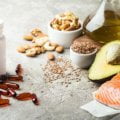Once determined only in boutique coffeehouses, cold-brew coffee has grown up: One in five Americans say they drink cold-brew espresso frequently or once in a while, in step with a 2019 report from the National Coffee Association. Starbucks and Peet’s now promote it by the cup of their shops, and you could buy ready-to-drink bottled bloodless brew from manufacturers including Califia Farms, Chameleon, Stumptown, and Slingshot at many grocery shops. Not incredibly, numerous appliance makers keen to cash in on the fashion sell low-tech structures that take the mess out of mixing up a batch of bloodless-brew espresso at domestic. Read our evaluation of bloodless-brew coffee makers, which covers the Bruer Cold Bruer, Oxo Cold Brew, BodyBrew The Bod, Toddy Cold Brew System, and Fellow Duo Coffee Steeper.
Cold-Brew Coffee one zero one
Cold-brew espresso is a different beast from iced espresso or bottled coffee products (cappuccino, mochaccino, and other espresso-based beverages) sold at the grocery store. All of those begin with trendy hot coffee that’s then chilled, developing a drink that has all of the bitterness and acidity of ordinary espresso, just minus the heat.
Many coffee drinkers (and producers of bottled liquids) add lots of sugar and glugs of milk or cream—and masses of energy with them to mask that bitterness. On the other hand, Cold-brew coffee is brewed in cold or room-temperature water over many hours (commonly 12 to 24 hours) and yields a brew that tastes smoother with much less bitterness and acidity.
Cold brew is made with the same beans you’d use for everyday espresso, but they’re ground more coarsely. To keep away from a vulnerable, watery drink, bloodless-brew coffee additionally requires a minimum of two times the grounds wished for classic warm brewing and is the reason why cold-brew coffee can be expensive, whether or not you buy it at a coffeehouse su,permarket, or whip up a batch at domestic.
“If you’re shopping for bottled or canned espresso, take a look at the label to keep away from introduced sugar, sodium, or other elements,” says Amy Keating, R.D., a Consumer Reports nutritionist. “Making it yourself will put you in control of what is in your espresso.”
A few espresso maker manufacturers have tried to speed up the method to capitalize on the bloodless brew craze. For example, Ninja makes a version that brews a lukewarm “bloodless brew” in just 15 minutes. Our professional flavor tester stated that while it doesn’t taste like a true bloodless brew, it does make for the right iced espresso.
Please make no mistake: Do-it-yourself cold-brew espresso makers aren’t a need; they’re steeping chambers for the water and grounds. But they make getting ready and filtering the coffee neater and much less cumbersome. (Trying to make bloodless-brew espresso with the usage of, say, a carafe and cheesecloth may be a messy and tedious affair.) The machines also make it less complicated to experiment with the ratio of water to espresso until you find the only one that produces the cup first-rate-perfect for your tastes.
What comes out of maximum cold-brew espresso makers in any case of that steeping isn’t prepared to enjoy. It’s a thick concentrate that you dilute with bloodless or warm water or milk, relying on the favored temperature and strength, earlier than consuming.
The Bitter Truth
Why trouble with all of the delivery time and cost of bloodless brew? Because of how it goes down. Fans say that cold brewing makes for a miles smoother drink without a great deal of the bitterness and acidity of traditional coffee. In truth, a cold-brew espresso and a warm-brew espresso made with identical grounds will have a very extraordinary taste profile because compounds inside the beans react in another way to cold water than they do to hot. Cold breww might also be a healthier preference than conventional iced or chilled espresso drinks.
Because of its enormously slight taste, drinkers are less likely to load up the cold brew with milk and sugar—and all of the added energy they create. Another selling factor of the bloodless-brew espresso is its extended shelf existence: It will remain in the fridge for up to 2 weeks. Regularly brewed coffee doesn’t store properly in the refrigerator. It begins to head stale quickly after it’s made because of an aromatic compound that degrades because it cools—all something to maintain in thoughts this summer season when you’re looking for a pick-out-me-up as a way also to cool you down.











